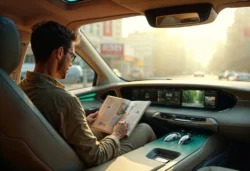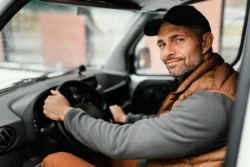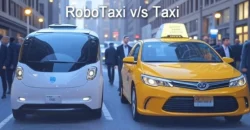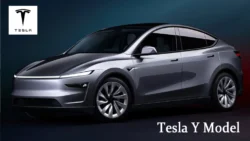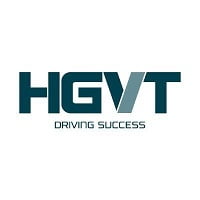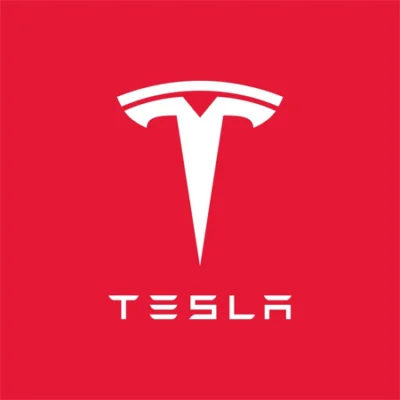
San Francisco, CA - Jul 25, 2025 (UTC) - Tesla is set to roll out a limited version of its much-anticipated robotaxi service in San Francisco this weekend, following its initial debut in Austin, Texas, last month. The service will operate with human safety drivers in the driver’s seat, a necessary measure due to Tesla’s lack of permits for fully autonomous testing or deployment in California, as confirmed by the California Department of Motor Vehicles (DMV).
A Cautious Expansion
The San Francisco launch, marks a significant step in Tesla’s push to expand its robotaxi ambitions. The service will be invite-only, targeting select Tesla owners in the Bay Area, which spans Marin, San Francisco, parts of the East Bay, and extends south to San Jose. Unlike the fully autonomous vision Tesla CEO Elon Musk has promoted, these robotaxis will feature safety drivers who can take control using the steering wheel and brakes, ensuring compliance with California’s strict regulatory requirements.
This follows Tesla’s Austin pilot, which began on June 22, 2025, with about 10 Model Y SUVs operating in a geofenced area of South Austin. The San Francisco rollout is described as “even-more-limited,” reflecting Tesla’s cautious approach amid regulatory hurdles and ongoing scrutiny. Musk noted during a Wednesday earnings call that Tesla is actively seeking regulatory approval in California, with plans to expand to Florida and Arizona as well.
Regulatory and Safety Challenges
The California DMV has stated that Tesla holds a permit for testing autonomous vehicles with a safety driver since 2014 but has not applied for driverless testing or deployment permits. Additionally, it remains unclear whether Tesla has secured a permit from the California Public Utilities Commission (CPUC) to offer rides to the public, limiting the service to employees for now. This regulatory gap contrasts with competitors like Waymo, which operates fully autonomous robotaxis in multiple cities, including San Francisco, providing over 250,000 paid rides weekly.
Tesla’s robotaxi service relies on its Full Self-Driving (FSD) software, currently in a supervised mode that requires human oversight. The company has faced criticism for its camera-only approach, with the National Highway Traffic Safety Administration (NHTSA) investigating FSD’s performance in low-visibility conditions. Videos from Austin’s launch showed issues like illegal turns and drop-offs in intersections, raising concerns about reliability.
Strategic Context
The robotaxi initiative is critical for Tesla as electric vehicle sales decline, with the company reporting weaker-than-expected earnings this week. Musk has emphasized autonomous driving as a key driver of future revenue, projecting significant growth from robotaxi services and unsupervised FSD software by late 2026. The San Francisco launch, though limited, is a step toward validating Tesla’s AI-driven strategy, which includes modified Model Y vehicles equipped with additional cameras and telecommunications units.
Competitive Landscape
Tesla faces stiff competition from Waymo, Zoox, and others who have advanced further in autonomous ride-hailing. Waymo, for instance, operates without safety drivers in San Francisco and has a robust safety record, despite a single fatal accident involving a non-Waymo vehicle. Tesla’s approach—relying on AI and minimal hardware—contrasts with competitors’ use of radar and lidar, sparking debate over safety and scalability.
Looking Ahead
While Tesla’s San Francisco launch is a milestone, its limited scope and regulatory constraints underscore the challenges ahead. The company’s earlier stunt of an autonomous Model Y delivery in Austin showcased its potential, but scaling to a fully driverless service remains a distant goal. Musk’s vision of a nationwide robotaxi network hinges on overcoming regulatory hurdles and proving the reliability of Tesla’s FSD technology.
For now, Bay Area Tesla owners invited to test the service will experience a glimpse of this future, albeit with a human driver at the wheel. As Tesla navigates California’s complex regulatory landscape, all eyes will be on its ability to deliver on Musk’s ambitious promises.
